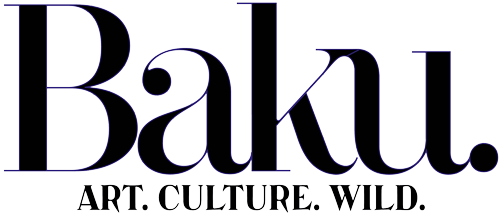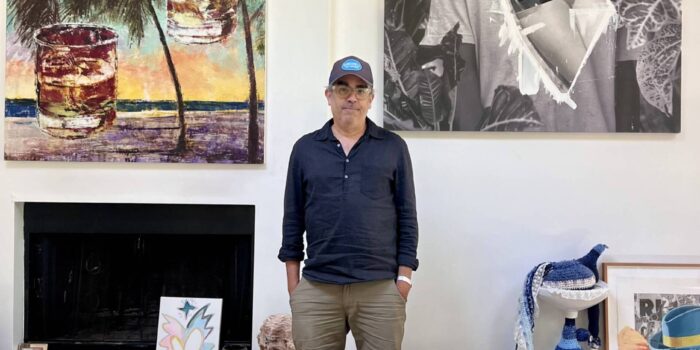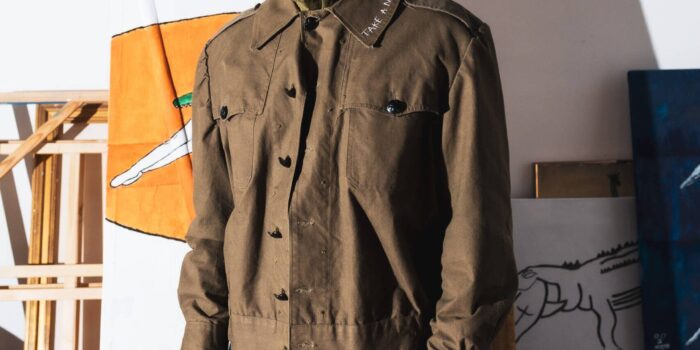In conversation with Baku, artist and sculptor Katya Emelyanova invites us on a journey of tactile discovery, where the interplay of texture, shape and colour serve as a gateway to emotional resonance and introspection. With ‘Oliver People’, and her most recent exhibition in Moscow, ‘To the Touch’ pushing viewers to engage in a dialogue that transcends language and cultural barriers.
Baku: Can you share a memorable or challenging experience that has influenced your artistic journey?
Katya Emelyanova: Empty studio. The only object in the studio was a yellow chair. On which I spent almost six months trying to see my new forms. It was a difficult, yet interesting period, when the energy of new images and forms begins to emerge from the emptiness and fear of this empty space.
Baku: Why do you create art? What need does it satisfy within you?
KE: Art is not something practical or utilitarian. I just feel good in what I do.
Baku: Can a piece of art ever be complete?
KE: The artist creates an object in the broad sense of the word, and the viewer builds his own concepts about this object.
Creating a finished perfect work is not relevant today because completion occurs in the relationship between art and the viewer.
Baku: As a sculptor, are there any particular interior/ exterior spaces or architectural places that have influenced you?
KE: When I discovered the nature of fractals and it dawned on me that everything most valuable created by humans, aesthetically speaking, is in one way or another related to natural forms.
The places that inspire me time and time again are Chateau La Coste and Gibbs Farm. A unique concentration of high level architecture/sculpture integrated into the landscape as part of an overall new form.
Baku: Do you think people understand your art? Do you think art requires understanding?
KE: Sculpture like any other kind of art – like dance, choreography, it needs to be felt, and I do not say the word understand, it is to feel, although understanding is also very important, but feeling is like in a dream, there should be no logic, and you need to proceed from your own intuition, which tells me what exactly I can express at a particular moment, and the work needs a viewer who activates it, otherwise it simply will not exist, because scientists say that the universe exists because it exists in our minds. And I think that the most important thing is not to think with your head.
Baku: What is the greatest motivation for the process of creation?
KE: I believe that creativity is a mystery, it is based on love, you can be in love with the process of creation and that will be the strongest motivation.

Sofia Trotsenko with Katya Emelyanova at ‘To the Touch’ Solo Exhibition Preview in Triumph Gallery, Moscow
Baku: All your totems from your ‘Oliver People’ sculptures embody different personalities. Do you construct them with this in mind or do they adopt these personalities upon completion?
KE: Always in different ways. For example, I make a sculpture of Nina Simone, of course I recognise her and try to feel her, but when the creative process starts I forget all that and try to focus on the present moment and act spontaneously, without thinking or asking questions. You can stick to the Old Forms but the content is always the same – the present moment, and in it is the decision before or after “breathing in” the name of the sculpture.
Baku: Where is your favourite place to exhibit your work?
KE: I think it makes no difference where your work lives, the main thing is that it breathes, communicates with the viewer and is in a certain context with what is around. And where the contact is denser, there is a stronger emotional return.
It is always up to my gallerists and buyers to choose where to exhibit.
Baku: What was the inspirational shift from ‘Oliver People’ to your most recent exhibition at Triumph Gallery, ‘To the Touch’? What is it like working across different mediums?
KE: It’s like stepping out of your comfort zone, creativity doesn’t tolerate static, it needs dynamics and development. At the moment of searching, new forms open up.
You try them out, explore them, argue with them, see them come to life, and that gives you a special value – a vision.
Baku: Do you think the end result is more important than the process?
KE: I forget myself and try to focus on the present moment and act spontaneously, without thinking or asking questions, and what I find the hardest is to ask myself this question at the end of the work, when the critical evaluation of what I have done comes into play.
Baku: Do you create to understand or do you express what you have already learned?
KE: Art takes our everyday experience and creates new worlds out of it. Perhaps the understanding of the new and the knowledge gained always creates the tension in the expression, in which the form of emotion and thought is born.
Baku: Is art a means of reflection, exploration or communication?
KE: In my case with Oliver People, it is more of a communication. You explore the object of expression, you let the emotion pass through you, through form and colour you draw the viewer into this game, and in this way you find a new point of contact with the viewer, and if your concepts coincide, it is already an encounter and dialogue on a specific radio wave.
Baku: Does art stimulate you emotionally or intellectually?
KE: It just rather…stimulates me instead.
Baku: How do you create a balance of the practical and the intuitive?
KE: Purely through touch
Baku: Would you characterise your work as interactive? Is art meant to interact with its viewer?
KE: Absolutely. You have to touch it. Tactilely feel its forms, the transitions of these forms, and if you can, awaken childhood memories.
Baku: If your work had no viewership, would you still make it?
KE: Is there any other way? I would do it, and the work would wait for its viewer for a dialogue. Works, like people, are alive if they are in contact with the world.
Baku: Do you have to be in a certain mood/ mindset to create your art?
KE: Yes of course, meditative creative silence.
Baku: Is there any specific discipline that provides you with the most powerful inspiration?
KE: Different disciplines have a big impact on inspiration. One learns to play emotionally at the intersection of the physical, visual, digital and biological contexts.
Baku: Do you ever experience a lack of inspiration to create? How do you overcome this feeling?
KE: By working. Alas!
Baku: Do you feel the need to confront things within yourself to create art?
KE: Probably the strongest confrontation is the confrontation of reality, it is very difficult to reproduce it – rather, it causes fear. You try to work with the intensification of reality, with its concentration, its saturation.
Baku: Speaking of the future, when and where will we have a chance to see your upcoming work/ shows and exhibitions?
KE: This year one of my pieces was shortlisted for selection at the Royal Academy for the Summer show in London. From July to August you can see incredible work by young artists alongside the masters of contemporary art. I was lucky enough to be in their company and now our energies in our work will be whispered about.
www.katyaemelyanova.com
Online Editor: Masha Nosova








